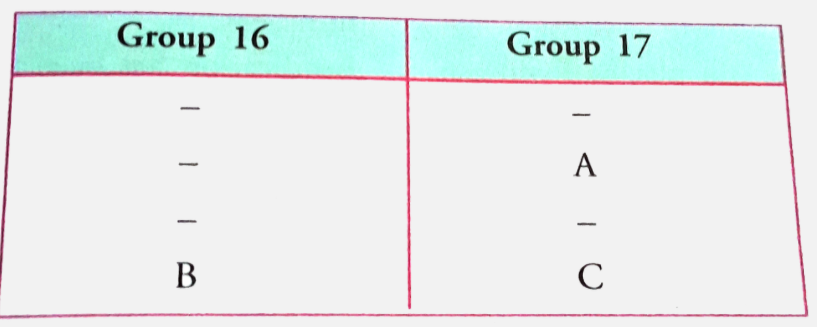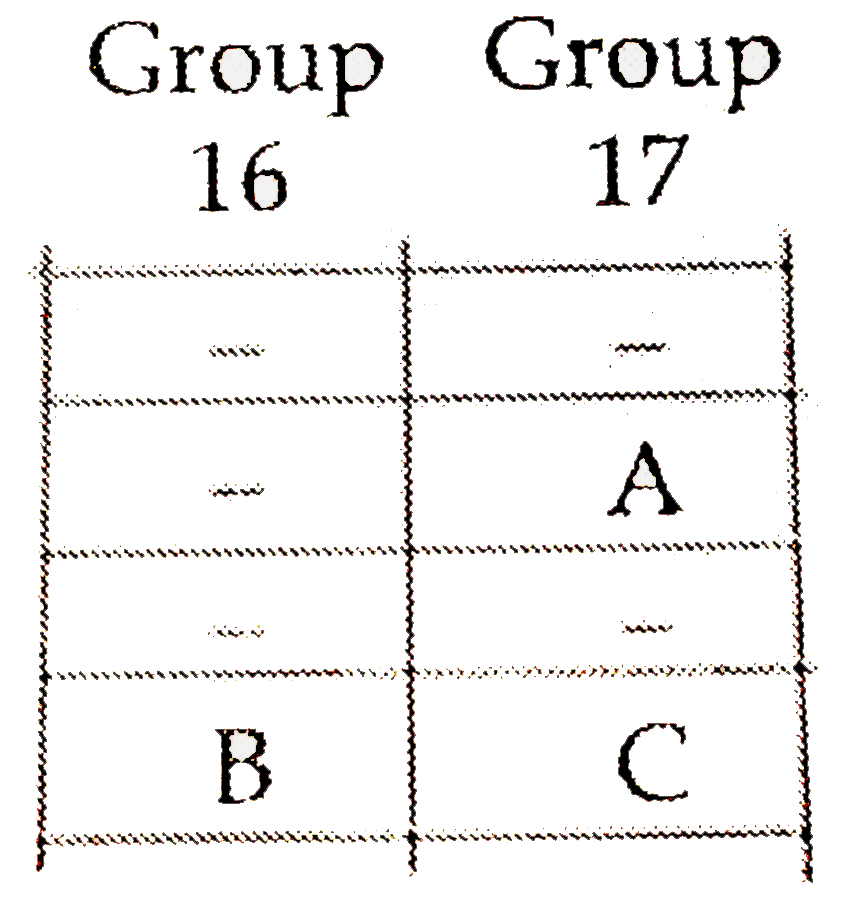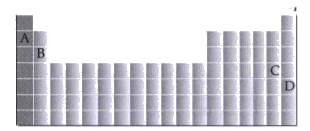The position of three elements A, B and C in che periodic table are shown below :

(a) State whether A is metal or non-metal.
(b) Seate whether C is more reactive or less reactive than A.
(c) Will C be larger or smaller in size than B ?
(d) Which type of ion, cation or anion will be formed by the element A ?
(a) Group 17 represents halogen family. All the elements included in the family are non-metals.Therefore, element A is a non-metal.
(b) Reactivity of non-metals is generally due to the electron accepting tendency of their atoms. Down the group, the atomic size increases. Therefore, the attraction of the nucleus for the outside electrons decreases. This means chat down the group of non-metals, reactivity decreases. Thus, the element C is less reactive than the element A.
(c) Atomic size of the elements decreases along a period. The elements B and C are present in the same period. Since C is placed after B, the size of the element C is less than that of B.
(d) The elements A, as pointed out earlier is a non-metal which belongs to group 17. It has seven valence electrons (2, 8, 7). In order to have the configuration of the nearest noble gas element, it will take up one electron and change to anion i.e., A− ion.
Topper's Solved these Questions
- PERIODIC CLASSIFICATION OF ELEMENTSBOOK - DINESH PUBLICATIONCHAPTER - PERIODIC CLASSIFICATION OF ELEMENTSEXERCISE - Very Short Answer Questions
32 Videos
- PERIODIC CLASSIFICATION OF ELEMENTSBOOK - DINESH PUBLICATIONCHAPTER - PERIODIC CLASSIFICATION OF ELEMENTSEXERCISE - Short Ansewer Questions
41 Videos
- PERIODIC CLASSIFICATION OF ELEMENTSBOOK - DINESH PUBLICATIONCHAPTER - PERIODIC CLASSIFICATION OF ELEMENTSEXERCISE - N.C.E.R.T. IN TEXT PROBLEMS
13 Videos
- METALS AND NON-METALSBOOK - DINESH PUBLICATIONCHAPTER - METALS AND NON-METALSEXERCISE - MCQ
64 Videos
Similar Questions
The position of three elements A, B and C in the Periodic Table are shown below:

(a) State whether A is a metal or a non-metal.
(b) State whether C is more reactive or less reactive than A.
(c) Will C be larger or smaller in size than B?
(d) Which type of ion-cation or anion will be formed by element A?
View SolutionThe positions of three elements A,B and C in the periodic table are shown here
(a) State whether A is a metal or non-metal?

State whether C is more reactive or less reactive than A
(c) Will C be larger or smaller in size than B?
(d) Which type of ion, cation or anion, will be formed by element A?
View SolutionThe position of three elements A, B and C in the Periodic Table are shown below :
Group 16Group 17−−−A−−BC
(a) State whether A is a metal or non-metal.
(b) State whether C is more reactive or less reactive than A.
(c) Will C be larger or smaller in size than B?
(d) Which type of ion, cation or anion, will be formed by element A ?
View SolutionThe position of three elements A, B and C in the Periodic Table are shown below –
Group16Group17−−−A−−BC
(a) State whether A is a metal or non-metal.
(b) State whether C is more reactive or less reactive than A.
(c) Will C be larger or smaller in size than B?
(d) Which type of ion, cation or anion, will be formed by element A?
View SolutionThe position of three elements A, B and C in the Periodic table are shown below :

Will C be larger or smaller in size than B?
View SolutionThe positions of three elements P, Q and R in the periodic table are shown below

Which of these three elements is most non-metallic ?
View SolutionThe positions of three elements A, B and C in the periodic table are shown below:
Group 16Group 17−−−A−−BC
State whether C is more reactive or less reactive than A.
View SolutionThe position of three elements A, B and C in the Periodic table are shown below :

Which type of ion, cation or anion, will be formed by element A?
View SolutionThe positions of three elements A, B and C in the periodic table are shown below:
Group 16Group 17−−−A−−BC
State whether A is metal or non-metal.
View SolutionThe positions of four elements A, B, C and D in the modern periodic table are shown below. Which element is most likely to form an acidic oxide?

View Solution
